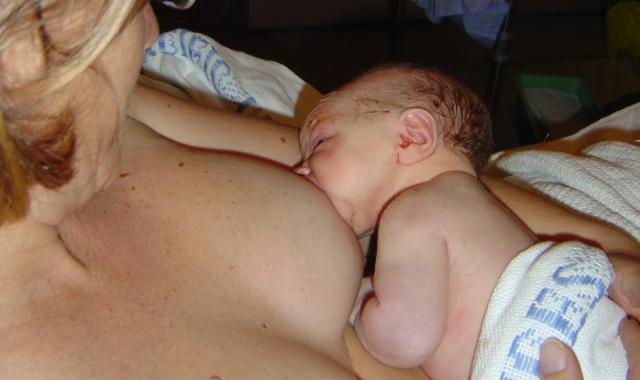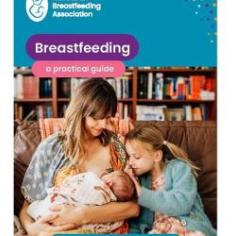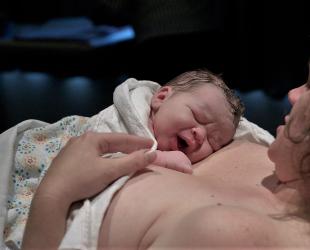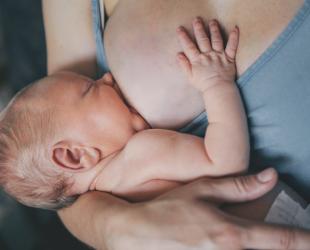Let your baby’s instincts guide them to the breast for a calm start to feeding.

Babies are born with instincts that help them find the breast and begin feeding. You can support your baby as they follow these instincts to move toward your breast and latch on in their own time.
This gentle approach, sometimes called ‘baby-led attachment’, can make breastfeeding easier and more comfortable for both of you. Allowing time for your baby to follow their instincts lets them learn where milk comes from and how to latch. It’s helpful when you’re both learning to breastfeed, especially if your baby is finding it tricky to attach, whether that’s in the first days or even a few weeks in.
These steps will help you support your baby to find and latch at your breast.
Watch for signs your baby is ready
Babies show they’re ready to feed long before they cry. Watch for early signs like turning their head, opening their mouth, or sucking on their hands. These gentle cues are your baby’s way of saying they’re ready to feed.
If your baby is upset, take a moment to help them settle. Calm your baby by:
- gently rocking or swaying
- speaking softly and making eye contact
- holding them skin-to-skin
- letting them suck on your clean finger
Starting when your baby is calm, alert and hungry gives them the best chance to use their reflexes and attach well.
Hold your baby skin-to-skin
After birth, holding your baby skin-to-skin helps maintain their body temperature and normal blood sugar levels. It also keeps baby’s heart rate and breathing steady.1 But skin-to-skin contact isn’t just for the first feed. It’s helpful for any feed and is a key way to calm your baby and allow time they need to use their instincts.
Take off your top and bra and keep your baby in just a nappy. Or, if you need to stay warm, you can open your top at the front or cover both of you with a blanket once your baby is feeding. Make sure the room is warm enough for comfort.
If you feel more comfortable with both of you lightly dressed, that’s okay. It’s not essential to be skin-to-skin at every feed. Just make sure your baby can easily reach your breast.
Try a laid-back position
Leaning back, rather than sitting upright, helps both you and your baby relax. But more than this, research shows that when you’re in a semi-reclined or laid-back position, your baby’s feeding reflexes are more likely to be triggered than if you’re holding them in other positions.2 Things like head bobbing, chin digging, and hand kneading, help your baby find the breast and latch deeply, making feeding more comfortable and effective.
To get started, find a position that feels comfortable. If you’re in bed, use pillows behind your back and under your knees for support. If you’ve had a caesarean, you can angle your baby’s body away from your wound but still keep them close.
Hold your baby upright on your chest, facing you and between your breasts. As you lean back, gravity helps keep your baby close. This position works well for baby to make their own way to your breast, as you gently support them. It's also less tiring for you and there’s less chance of them pulling away and dragging on your nipple.
Let your baby take their time
While lying on your chest, your baby will follow their instincts, bobbing their head, sliding or even using their hands and feet to move towards your breast. They might nuzzle and lick your nipple or suck their own fists or press into your breast with their fists. All these movements are part of your baby getting ready to feed. They also help release oxytocin in your body, which gets your milk flowing. There’s no need to rush. Just let your baby set the pace.
When your baby is ready, they’ll open their mouth fully, dig their chin into your breast, and latch on. Try not to push on your baby’s head. Support their neck and shoulders gently so they can control their own movements.
To check on the signs of a good latch...
It can take a bit of practice
The more chances your baby has to use their instincts to find the breast, the more skilled they’ll become.
This isn’t just for the newborn period. As time goes on, if attachment is still challenging, you can always go back to basics, giving your baby another chance to follow these instincts and build confidence at the breast.
More on positioning and attachment
Want tips on holding your baby for a comfortable feed?
See Positioning – how to hold and help your baby to breastfeed for practical advice and different breastfeeding holds.
Curious about signs of a good latch?
Read Attaching your baby – a closer look to learn how to tell if your baby is attached well and what to do if feeding hurts.
© Australian Breastfeeding Association December 2025
- Moore, E. R., Bergman, N., Anderson, G. C., & Medley, N. (2016). Early skin-to-skin contact for mothers and their healthy newborn infants. Cochrane Database of Systematic Reviews, Issue 11. Art. No.: CD003519. https://doi.org/10.1002/14651858.CD003519.pub4
- Colson, S. D., Meek, J. H., & Hawdon, J. M. (2008).
Optimal positions for the release of primitive neonatal reflexes stimulating breastfeeding.
Published in Early Human Development, Volume 84(7), Pages 441–449. https://doi.org/10.1016/j.earlhumdev.2007.12.003
Find out more about getting breastfeeding started
Online interactive session free for members
Newborn Virtual Village - Comfortable attachment




